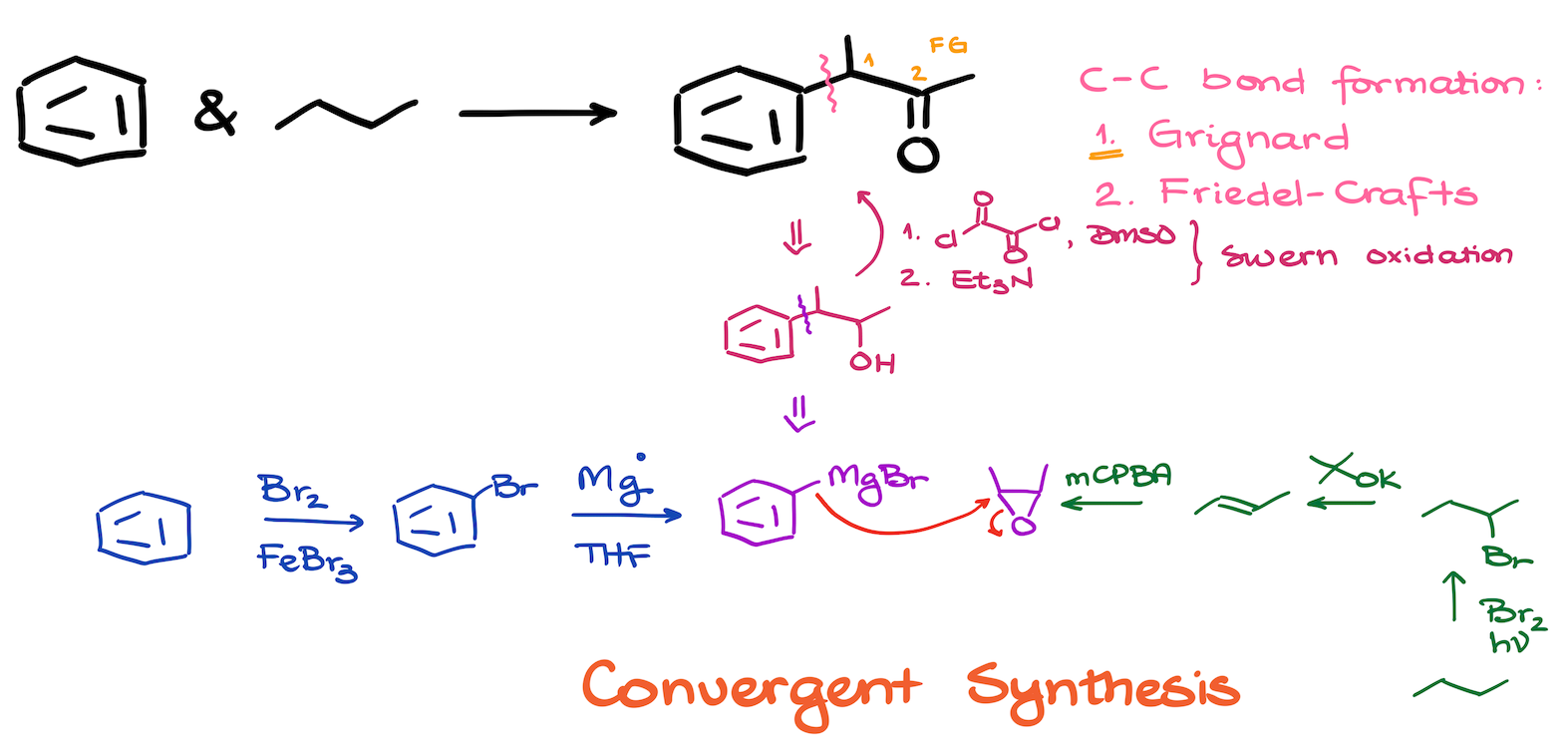22. Synthesis of a Substituted Ketone

This synthesis is a good mix of the first and second semester organic chemistry. The key here to recognize the Grignard reaction with an epoxide that directly places all our key bonds where they need to be. This synthesis is also a good example of a convergent synthesis where we make parts of the molecule separately and then bring them together to make the final molecule.
Reactions that we’re going to see in this synthesis include:
- Electrophilic aromatic substitution
- Grignard reaction
- Epoxide opening
- Epoxidation
- Radical halogenation
- Elimination
- Oxidation of alcohols

